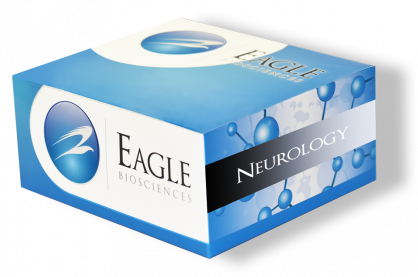BDNF ELISA Assay Kit
The BDNF ELISA Assay Kit is For Research Use Only
Size: 1×96 wells
Sensitivity: 7 pg/ml
Dynamic Range: 15.625-1000 pg/ml
Incubation Time: 3.5 hours
Sample Type: Serum, Plasma, culture supernatants
Sample Size: 100 µL
Alternative Names: Brain-Derived Neurotrophic Factor, Human BDNF
Assay Background
The protein encoded by this gene is a member of the nerve growth factor family. It is induced by cortical neurons, and is necessary for survival of striatal neurons in the brain. Expression of this gene is reduced in both Alzheimer’s and Huntington disease patients. This gene may play a role in the regulation of stress response and in the biology of mood disorders. Multiple transcript variants encoding distinct isoforms have been described for this gene. [provided by RefSeq, Jan 2009]
During development, BDNF promotes the survival and differentiation of selected neuronal populations of the peripheral and central nervous systems. Participates in axonal growth, pathfinding and in the modulation of dendritic growth and morphology. Major regulator of synaptic transmission and plasticity at adult synapses in many regions of the CNS. The versatility of BDNF is emphasized by its contribution to a range of adaptive neuronal responses including long-term potentiation (LTP), longterm depression (LTD), certain forms of short-term synaptic plasticity, as well as homeostatic regulation of intrinsic neuronal excitability.
Related Products
HDGF ELISA Assay Kit
Neuropeptide Y ELISA Assay
VIP ELISA Assay Kit



